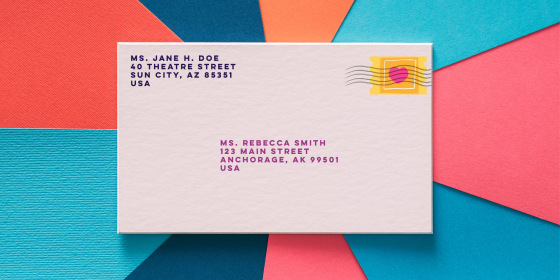

In an age of text messages and emails, it might seem a bit dated to drop a letter in the mailbox. But there are still plenty of reasons to send mail the old-fashioned way.
For instance, a wedding or other invitation is best received via snail mail because while a text or evite is pretty much instantaneous, it’s not quite the same as getting an official hard copy to have on hand.
And while birthday wishes are meaningful no matter how they’re conveyed, getting a funny or sweet card in the mail is an especially thoughtful way to recognize someone special. The same goes for a Christmas or sympathy card.
If you’ve got something to send and are wondering how to properly address an envelope, we’re here to offer some assistance.
“Addressing an envelope takes some thought to do it properly,” according to Diane Gottsman, a national etiquette expert at the Protocol School of Texas.
“I always use the name of the person, including an honorific when appropriate,” Gottsman tells TODAY.com. “Do not abbreviate the city and state for a formal envelope and make sure and include a return address.”
But that’s just the beginning. Read on to learn, step-by-step, how to correctly address an envelope along with some additional guidance on using labels and other helpful tips.
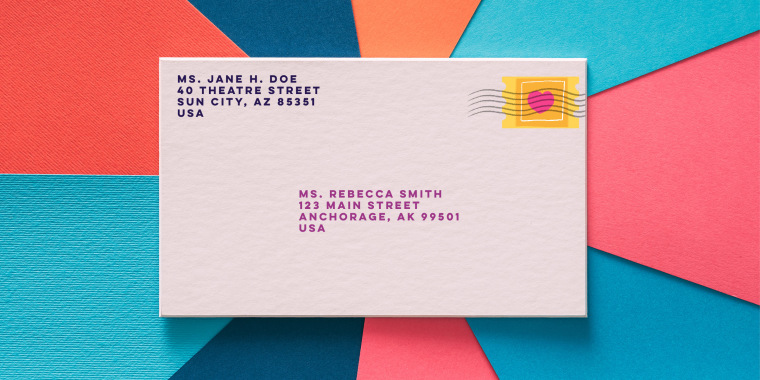
There are two addresses that are typically seen on the envelope, but only one is technically required: the recipient's. The sender's address isn't necessary, but it is recommended. If there are any mistakes that prevent the delivery of the letter, the lack of a return address means the post office will be unable to send it back in order to fix any problems.
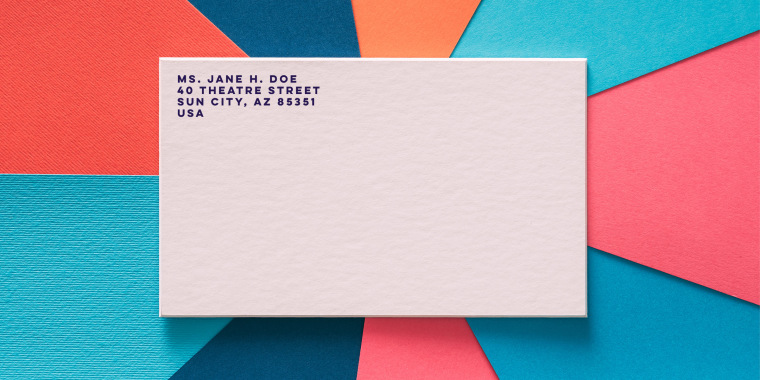
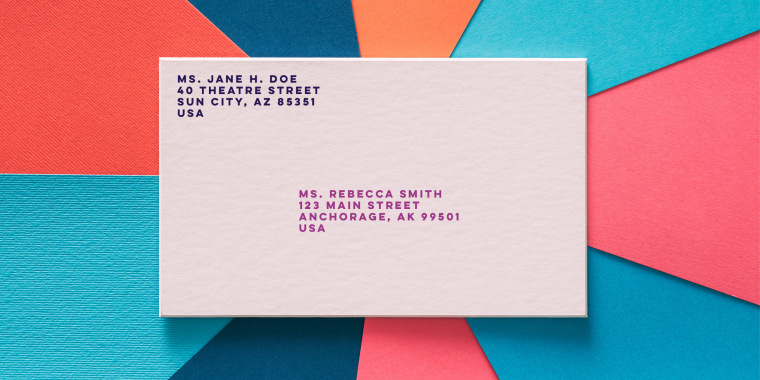
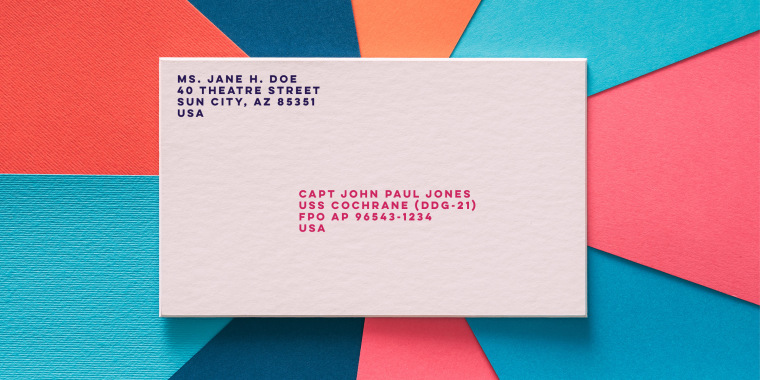
Even though they follow the same format as regular addresses, military addresses don't use the city and state names that many are used to.

If sending a letter to an overseas address that isn't military, the address format typically stays the same — just with the addition of the country name as the last line.
Some countries place the ZIP code in front of the city and country but it varies from country to country, so just check to be sure.
If you're unsure of the extra four-number code, USPS has a ZIP code lookup tool on their website.
 should you use" width="2400" height="1200" />
should you use" width="2400" height="1200" />
Placing the stamp on a envelope is easy, it simply goes in the upper righthand corner. Knowing which stamps and how many to use can be the tricky part, however.
In July of 2024, a postage rate change went into effect leading to new pricing on sending mail.
For a standard 1-ounce letter being mailed in the U.S., the price of a postage stamp is now 73 cents. Square, oversized and oddly-shaped envelopes start at $1.19. Standard, rectangular postcards cost 56 cents to mail.
On a standard letter, each additional ounce over 1 ounce requires additional postage of 28 cents per ounce.
Purchasing Forever stamps is always a good idea because even when stamp prices increase, they remain usable regardless of how much new stamps cost, which is why they're known as "Forever" stamps.
Sending a 1-ounce letter internationally, including Canada, Great Britain and more than 180 other countries, costs $1.65. For larger envelopes, postage prices will vary depending on weight, size and destination.
Global Forever stamps are available for purchase and work just like the U.S. ones; once purchased, they remain usable indefinitely, even if prices increase.
With the appropriate stamp, accurate addresses for both the sender and the recipient, and the right placement of all three on the envelope, your letter is ready for mailing.
Majesty HenrySarah is a lifestyle and entertainment reporter for TODAY who covers holidays, celebrities and everything in between.